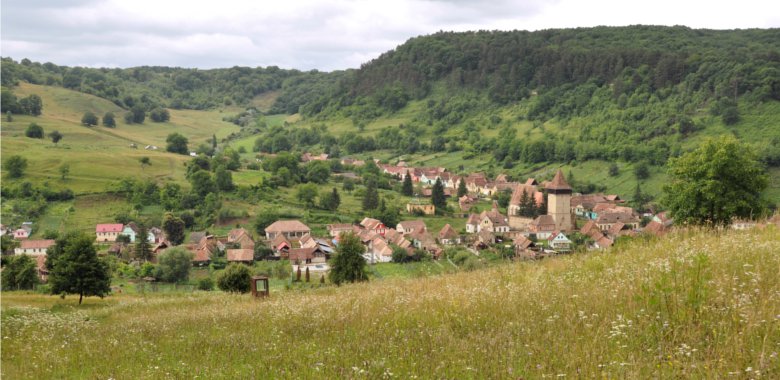Rural development and biodiversity in Central Romania
Recent research (Mikulcak et al. 2012) from Central Romania highlights the need to foster rural development strategies that integrate local needs and biodiversity conservation.

Photo: Joern Fischer
Compared to most other countries of the European Union, Southern Transylvania (Central Romania) is characterized by an exceptionally high level of farmland biodiversity. This results from small-scale, low-intensity land management practices that have maintained extensive areas of high nature value (HNV) farmland.
Today, Southern Transylvania faces challenges such as high unemployment rates and ageing of the rural population, which put traditional farming at risk. With Romania’s accession to the EU in 2007, Southern Transylvania became part of a complex multi-level governance system that in principle provides mechanisms to balance biodiversity conservation and rural development (e.g. the Natura 2000 network of protected areas). However, research has revealed that Romania’s accession to the EU has provided both threats and opportunities for farmland biodiversity conservation in Southern Transylvania. According to mayors and local experts, the implementation of EU rural development policy is heavily biased towards economic development, with relatively little explicit acknowledgement of the interdependencies between economic, social and environmental development.
Agricultural intensification appears likely at the moment because it is widely seen as desirable by government officials. Moreover, relevant EU funding opportunities are poorly communicated. Although a large part of the study area is located within a Natura 2000 site, the status as a ‘protected area’ is very unlikely to effectively safeguard biodiversity. A more comprehensive social-ecological approach to rural development is needed that supports both the ecological and social infrastructure of the study area. At the EU level, future policies may need to be more flexibly designed to account for the particular challenges of semi-subsistence areas such as Southern Transylvania. At the national and county levels, administrative capacities and information flows need to be improved to foster the cooperation and knowledge transfer between agricultural funding agencies and local communes. Finally, within communes, community cohesion needs to improve. Active bridging organizations are likely to play a key role in assisting the harmonization of local needs and EU policy.
A key concern is that biodiversity is not forgotten in the process. Existing incentives provided by EU rural development policy will favor agricultural intensification, despite its likely ecological costs. Under a scenario of only minor changes to the Common Agricultural Policy (CAP) and its implementation post 2013, the EU is well on the way to (once again) miss its goal of halting farmland biodiversity decline.
